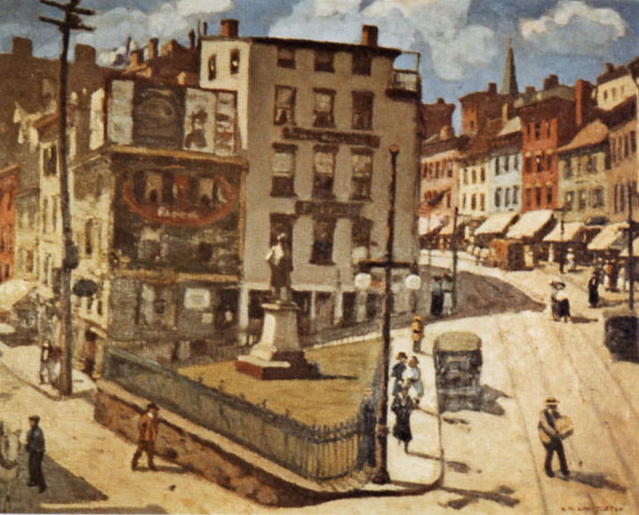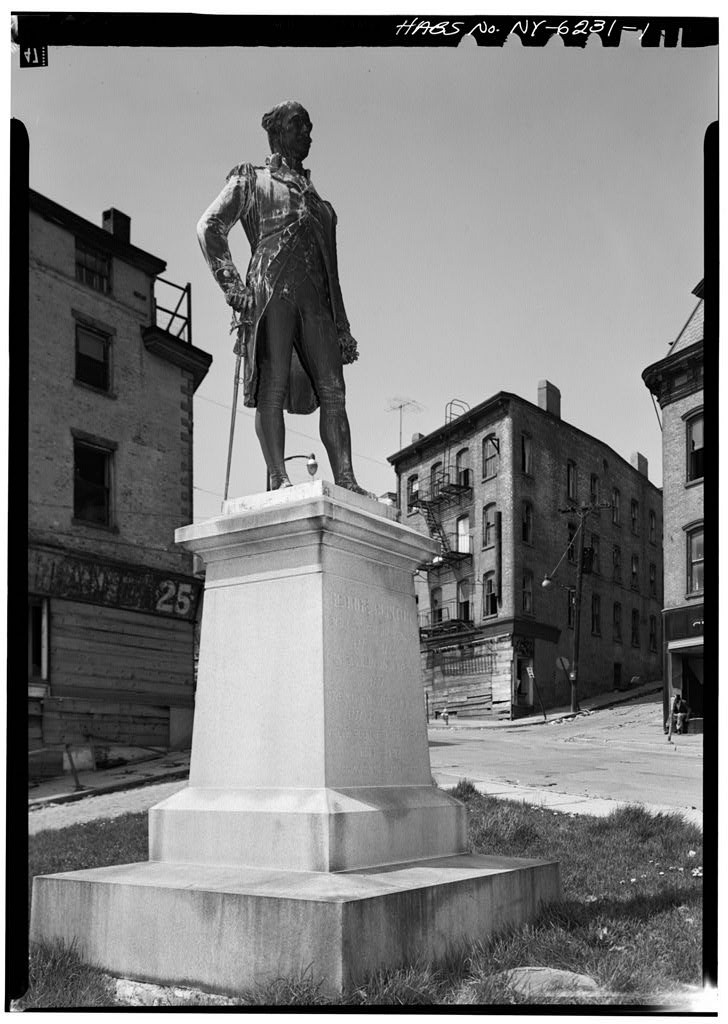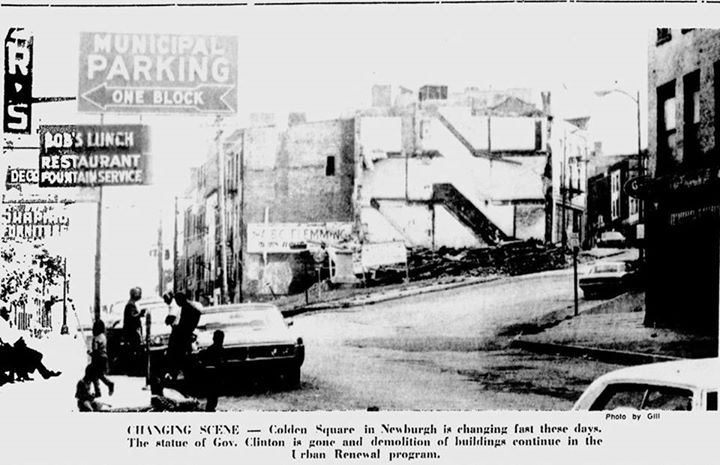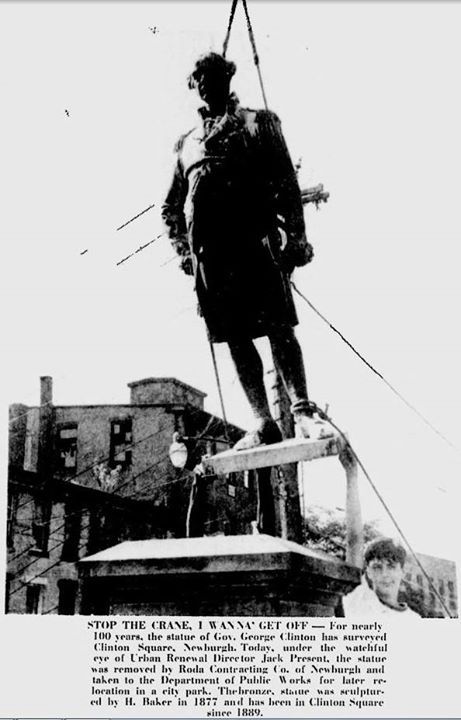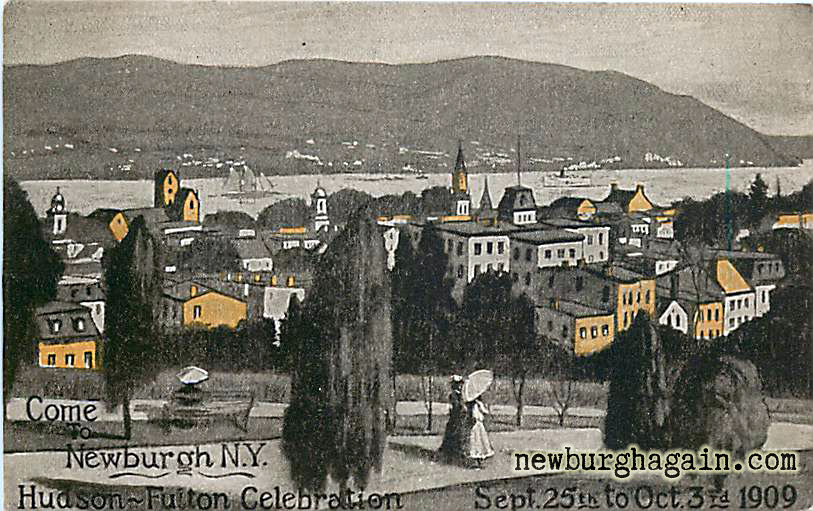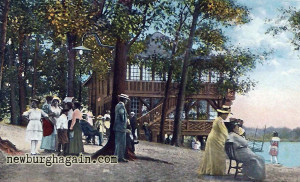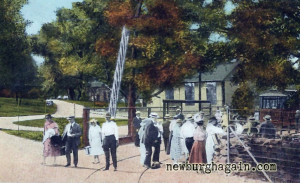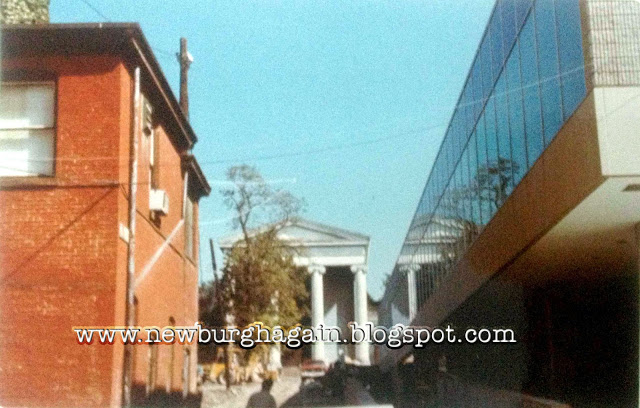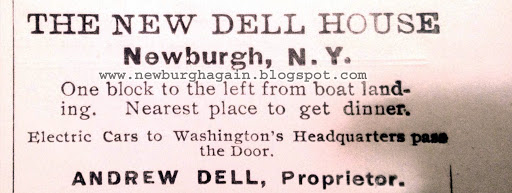Newburgh in 1940
NEWBURGH, one of the most beautifully-located cities in America, starts on the last quarter of its first century of existence as a city with new confidence and, promise of accumulating development.
The community has passed through, 10 years of the most devastating depression in history without suffering any reverse which it has not been able to overcome. It has more than held its own; and among business men and citizens there is unwavering belief in the city’s future and firm resolve to continue, consolidate and intensify the progress which has been recorded since 1865.
Located on mile-wide Newburgh Bay at the gateway to Hudson Highlands, with a background of mountains to the east, south and southwest, Newburgh has an artistic charm which sets it apart from other communities and justifies the vision of Hendrick Hudson, discoverer of the Hudson River, in 1609 regarding the pleasantness of the location on which “to build a city”.
The 75th anniversary of the chartering of Newburgh as a city by Act of the Legislature is also the 140th anniversary of its incorporation as a village, Newburgh was the third village established in the State. Through all the years, from colonization by German Lutheran refugees in 1709, through township and village days to the present city government, Newburgh has made a distinctive name for itself in history, industry and commerce, in cultural accomplishments, education, religion and recreation, and in other lines which have given the community character and enriched life, and have contributed generally to the public welfare.
Beginning as a village with about 2,500 population, and as a city with about 16,000, Newburgh has now approximately 32,000 residents, not including large suburban populations to the north, west and south. Unlike most cities, Newburgh has made little change in boundaries in 75 years. Few cities of comparable population have such restricted area. The city ranks 18th in the State and 301st in the United States.
To a far greater extent than the average city, Newburgh’s welfare has been affected by transportation, in which tremendous changes have taken place in 150 years. At the outset, Newburgh was the outlet from a vast “western country” extending as far as Buffalo to the New York City market. Those were the days when the only transport was by wagon and water.
Newburgh’s location on the Hudson was the most favorable of any town, because of ease of access through mountains to the west and northwest. Construction of railroads diverted much of the trade, and Newburgh suffered until its business men united in the building of turnpikes. Subsequently Newburgh also obtained railroad facilities and retrieved much of its oldtime position.
But further changes in transport were due to take place. For many years there was high level of activity on railroads and the Hudson River, and Newburgh enjoyed prosperity greater than that experienced in earlier days. Gradually, however, a new factor in transportation developed – the modern highway and the self- propelled vehicle.
This is the factor which predominates today and gives every promise of continuing for all time. Newburgh, following inevitable readjustments in its industry and commerce, is reaching a stabilization with regard to transport which definitely fixes the business trend of the community and appears to make certain development and growth in excess of anything experienced before.
Within late years Newburgh has become the chief distributing center of the mid-Hudson region. This is a fact because of its combined facilities of railway, waterway and most of all highway. The city is a base for operations extending for many miles in all directions west of the Hudson. Several national concerns have established distributing stations in the city and vicinity, and others are certain to do so.
Meanwhile there have been manufacturing changes, with a trend from “heavy” to “light” industries. While some of the changes have been seemingly advantageous, the net effect, over a period of time, has been consolidation of gains from new concerns which have taken up the slack in employment. Current surveys indicate steady improvement, with the number of gainfully employed exceeding the national average.
